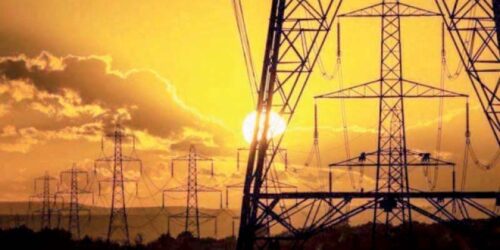The Power Division has approached National Electric Power Regulatory Authority (Nepra) for approval of a new subsidy mechanism for domestic consumers of Discos and KE, meant to bifurcate domestic consumers in more categories for higher revenue generation.
The purpose of the new mechanism is to expand definition of lifeline consumers to include residential non-Time of Use (ToU) consumers having maximum of last twelve months and current month’s consumption, which implies for 100 units two rates for 50 and 100 units per month will continue.
The new tariff subsidy policy is likely to be implemented from September 2021, reportedly before the restoration of the stalled International Monetary Fund’s (IMF) programme.
The current level of subsidy, sources said, has been calculated at Rs 501 billion for FY 2021-22 but the government has allocated Rs 330 billion. Of this Rs 26 billion is meant for 3,936 zero-rated industrial consumers, Rs18 billion for 402,000 ex- FATA-residential consumers, Rs 2 billion for AJ&K, and Rs 15 billion for 337,000 industrial consumers as Industrial Support Package (ISP).
Power Division finalises new draft PPA with KE along with disputes
The subsidy of about Rs70 billion is being extended to 18 million consumers using 1-100 units monthly.
The amount of subsidy for 5 million domestic consumers using 101-200 units in a month is about Rs 85 billion, and Rs 65 billion for those who use 201-300 units.
The number of consumers using 301-700 units is one million, who cross-subsidize other domestic consumers with Rs 5 billion whereas consumers using above 700 units’ per month contribute Rs 6 billion as cross-subsidy.
According to sources, total subsidy amount of Rs200 billion is being extended to 26 million domestic consumers. The federal government is also extending Rs56 billion subsidy to 2 million consumers of Karachi Electric (KE).
In agriculture sector, Rs 23 billion subsidy is being given to 29,000 agriculture consumers of Balochistan whereas a subsidy of Rs 63 billion is being given to agriculture consumers of other Discos.
The government has allocated Rs 184 billion for FY 2021-22 as Tariff Differential Subsidy (TDS) for Discos.
The Cabinet has already approved the following recommendations: (i) expanded definition of the lifeline consumers to include residential Non-Time of Use (ToU) consumers having maximum of last twelve months’ and current month’s consumption of 100 units; (ii) residential non-ToU consumers having maximum of last twelve months consumption of 100, 200 and 300 units would be eligible to the subsidized rates of the relevant slab; and (iii) residential non-ToU consumers having maximum of last twelve months consumption of 200 or 300 units (subject to analysis), currently being billed at subsidized rates in low consumption months, would be billed as per a mechanism designed to ensure that a) ineligible consumers do not receive high subsidy amounts and b) the price shock to such consumers is minimized.
According to sources, the tariff slab of 301-700 units per month will be broken into two or more slabs, with the lower of these slabs charged at a lower rate (to be determined on the principle of progressive elimination of subsidy).
Power Division has also requested Nepra to create a new category of protected consumers (those consuming 200 units per month consistently for the past six months).
It has further proposed breaking the 301-700 slab into four slabs – 301-400, 401-500, 501-600 and 601-700 – with the same marginal tariff. Each of these slabs would continue to get the previous slab benefit of 300 units slab as today.
Nepra will hear the federal government’s request of Policy Guidelines under section 31 of the Regulation, Generation, Transmission, Distribution of Electric Power Act, 1997 for providing basis of the re-targeting power sector subsidies in future.
Power Division, in the proposed Guidelines, has requested for incorporation of the following modification/adjustment in Discos i.e. Discos and KE Schedule of Tariffs (SoTs) as well as uniform SoT as was determined by Nepra and notified on March 22, 2018 as modified by SRO on January 1, 2019 and SRO of February 12, 2021 including the KE schedule of tariff currently in field.





